YYYYMMDD >>> BACK HOME <<< >>> SELECTED FEATURES <<< >>> HIDDEN ARCHIVE <<<
[20230302]
INSECT MEDIA by ANN LISLEGAARD at PALACE ENTERPRISE [from 20230120 to 20230311]
[Photos: palace enterprise]
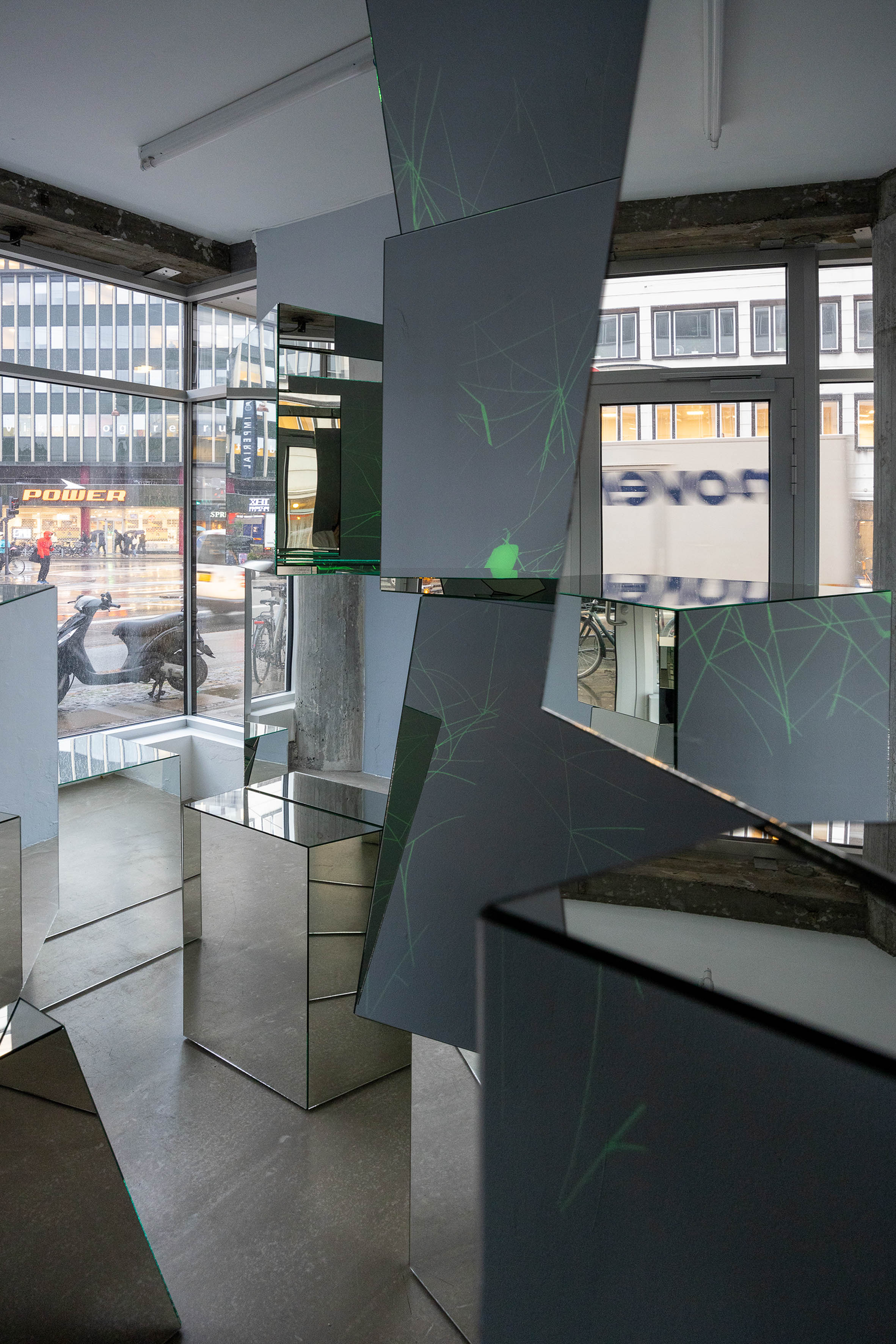
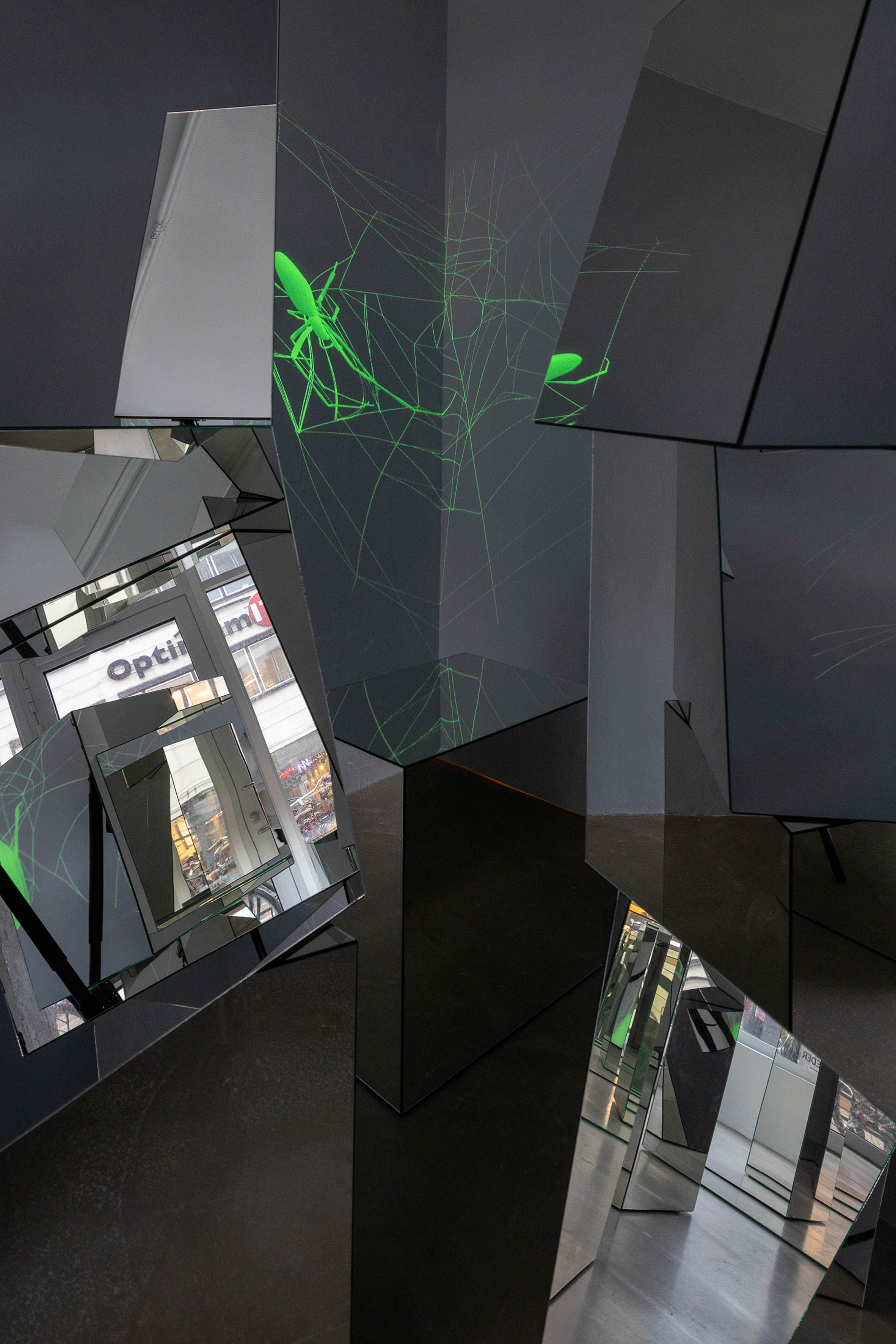
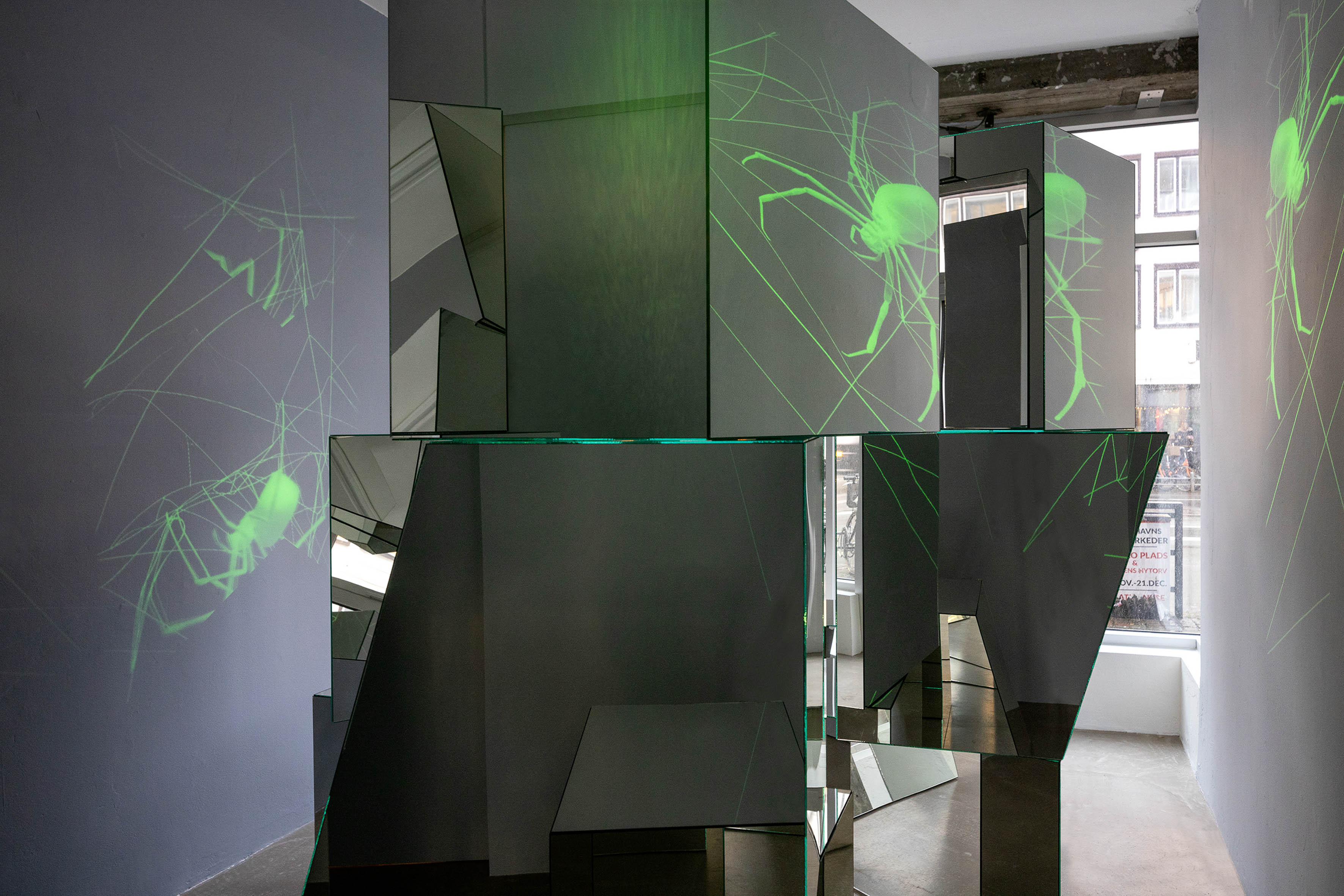



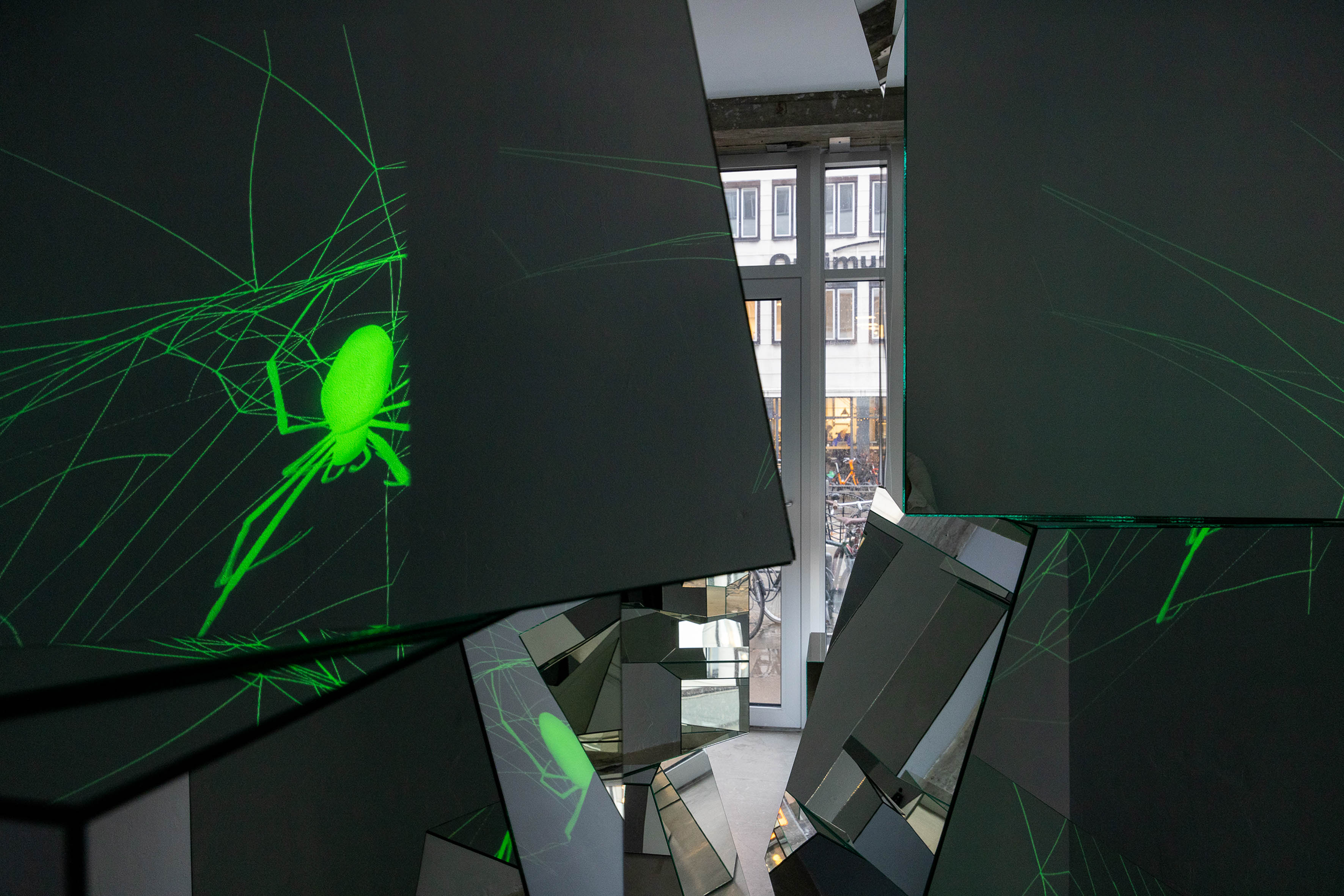

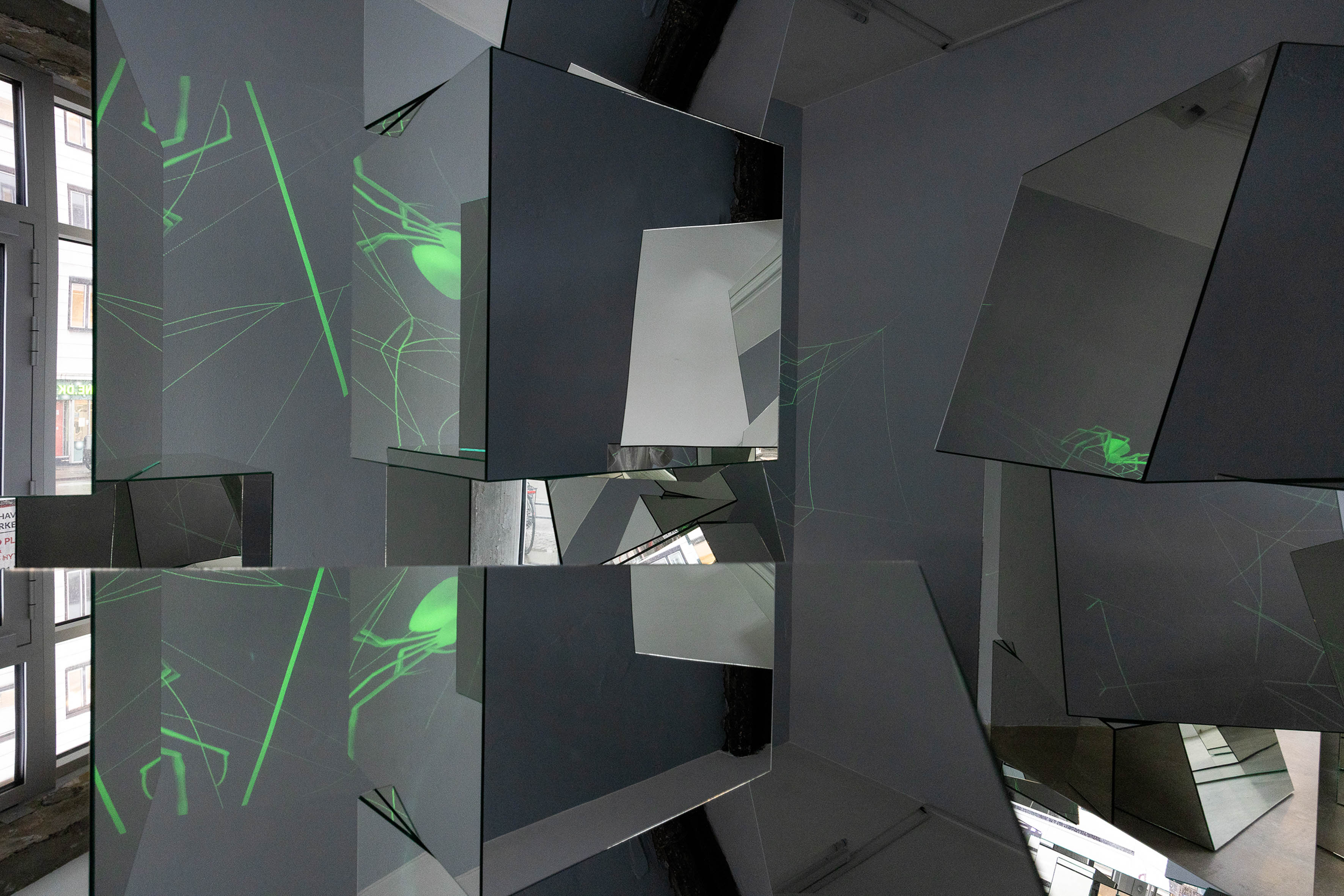




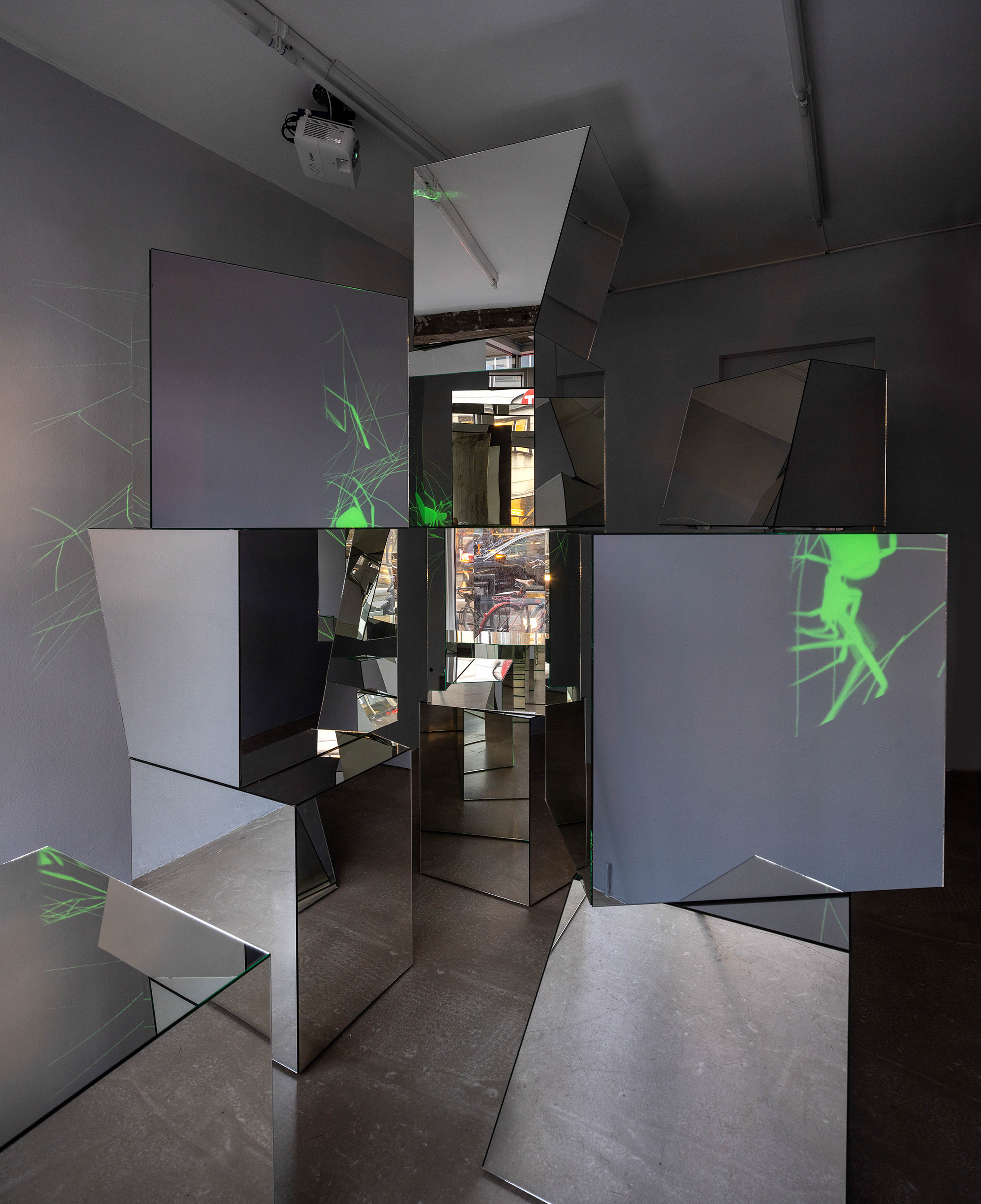
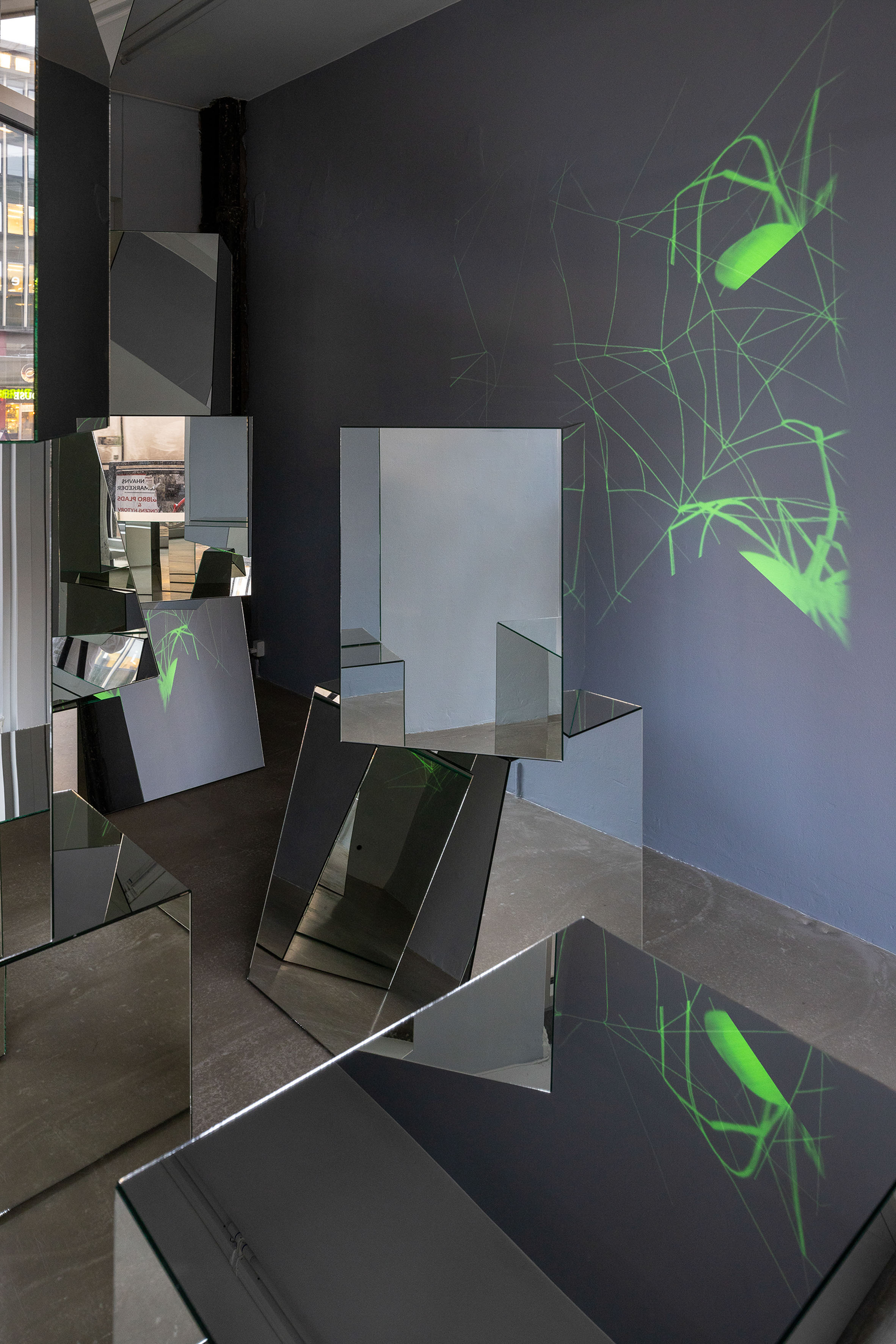

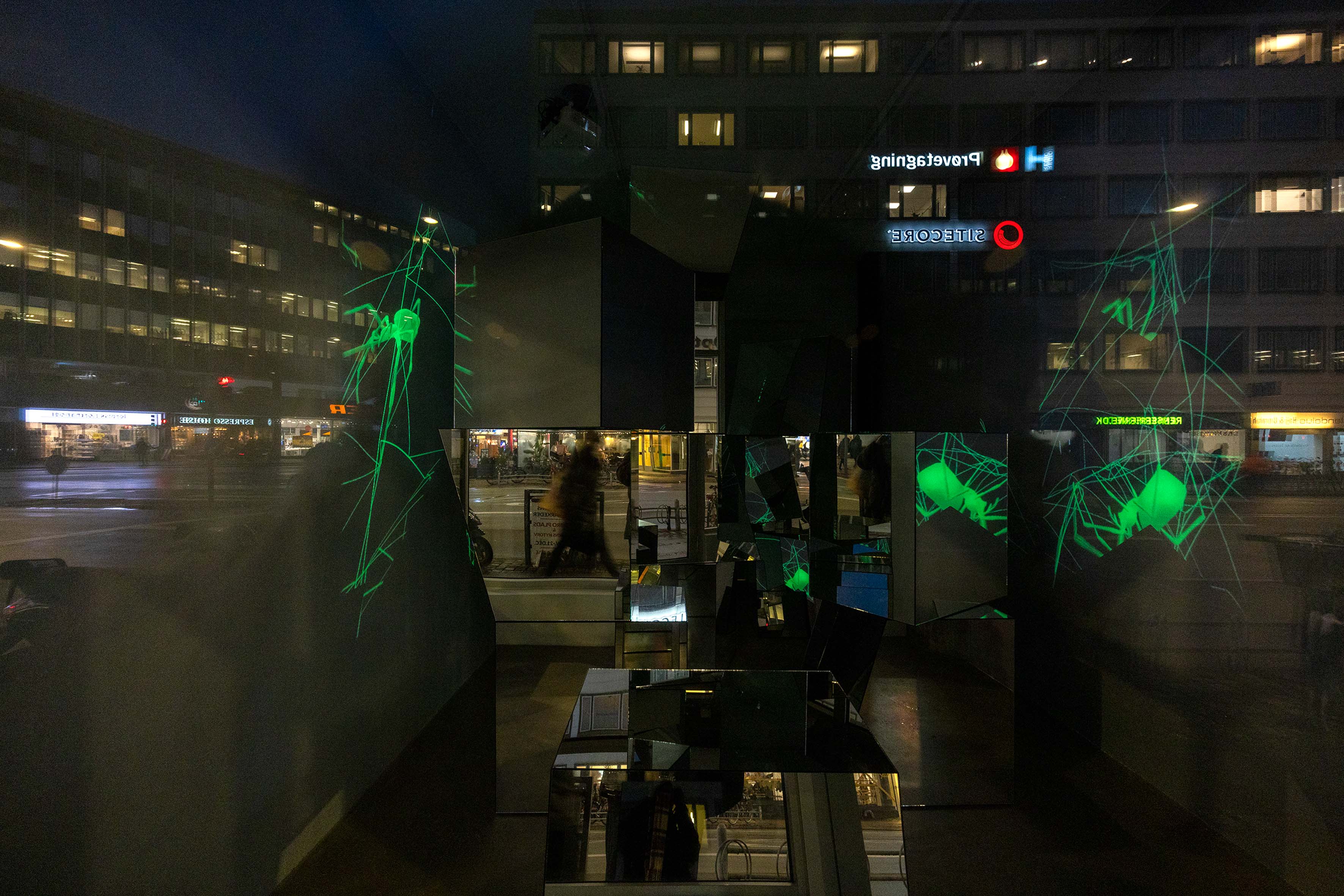
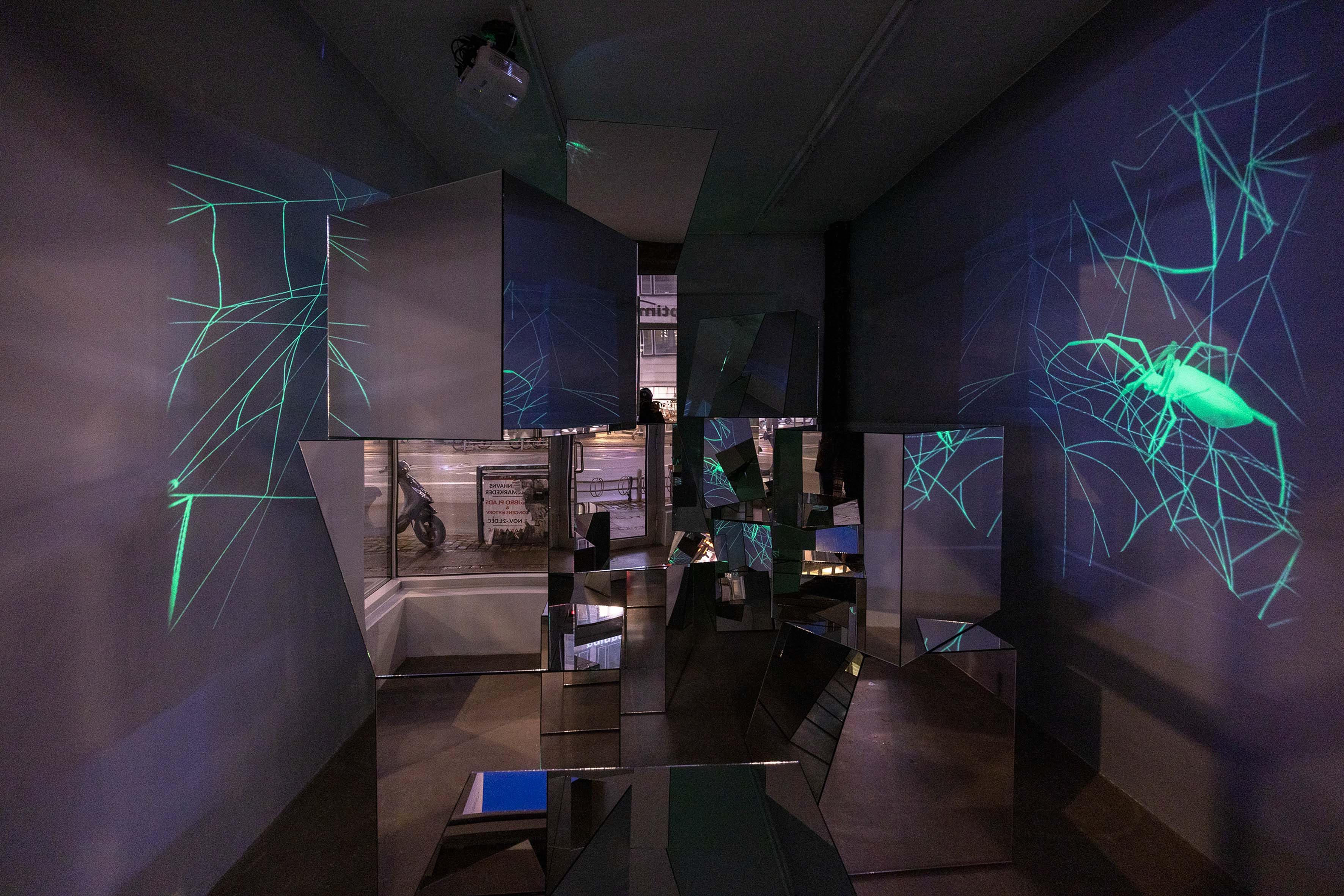

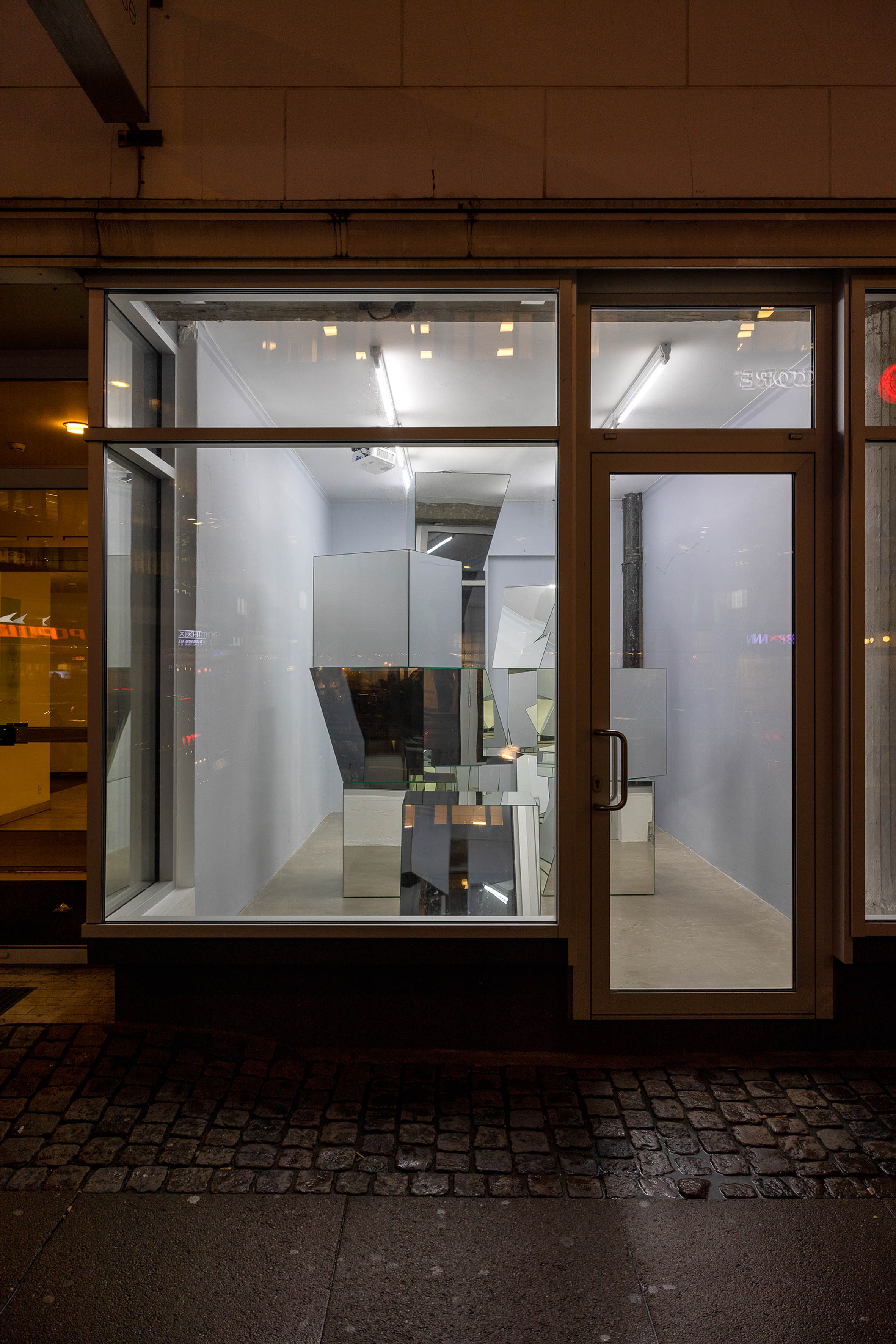
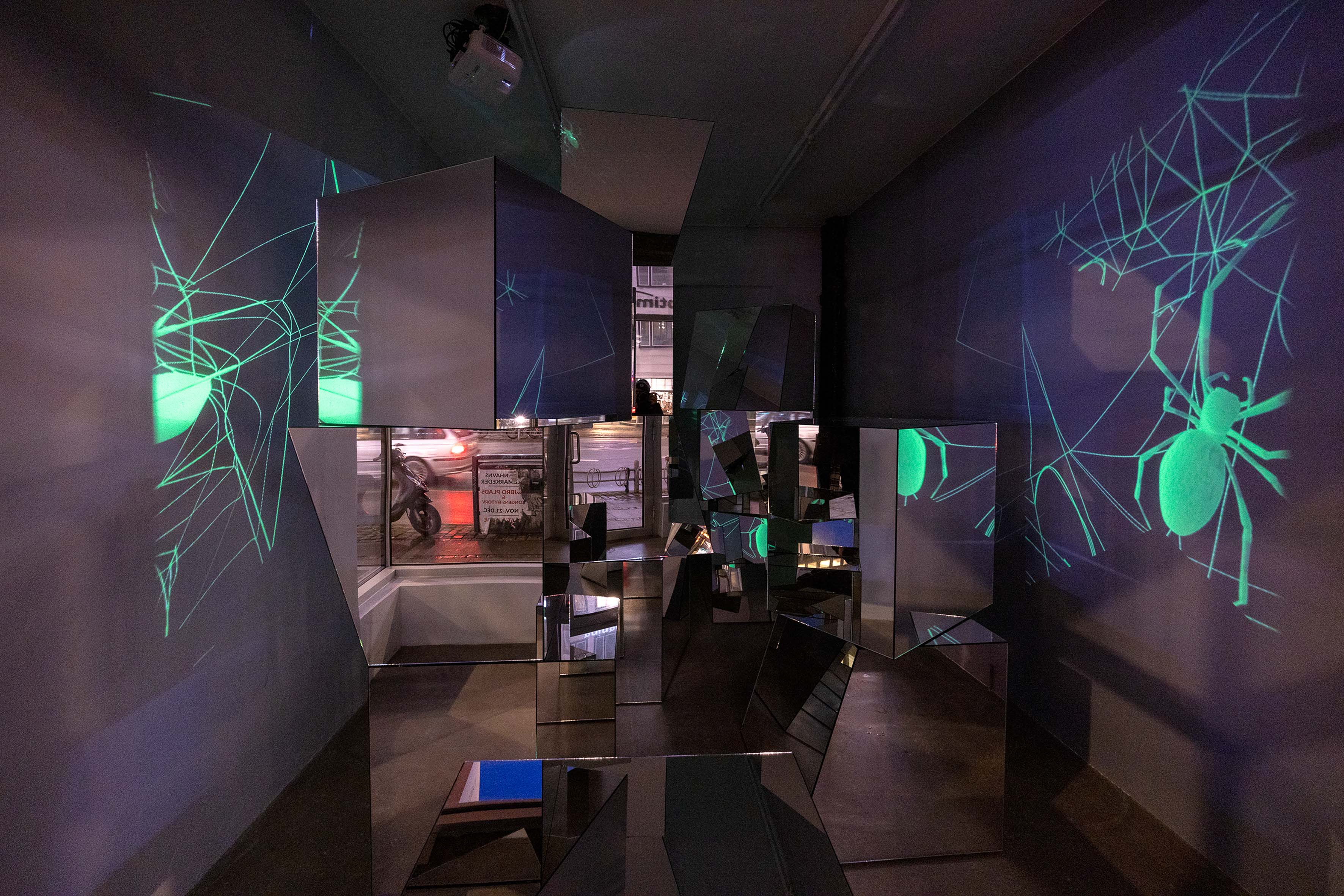
I personally love spiders, not least for how mythology equates them with female transgressions of the established order. But even for the arachnophobes among us, Lislegaard’s dazzling installation Spinning and Weaving Ada (2016) must be a wondrous space. I find it gentle, dreamy indeed. In this web woven of three and more dimensions, both digitally animated and reflected as infinitely duplicated fragments of moving images, her spiders’ glow as vivid specters. Their silent dance is formed through a software-aided analysis of the ways spiders build their webs: from a first exploration of the space of interest, to the assembly of a prototype, then a frame, now the filaments that connect the center with the edge, and finally the sticky spirals connecting and stabilizing the construction.
Borrowing from the spiders’ tactics, Lislegaard uses a meticulous composition of 3D animations following the same rules to build her web—however this one is woven in code. Dissatisfied with the axes of X, Y and Z, limiting this world of our perception, hers is an attempt to move beyond that which is towards that which could be, or that which is already here but not yet recognizable to us. And what better place is there to look for models than the elaborate weavings of insects and the promise of coding to construct what the rules of physics do not permit in digital space. Lislegaard’s future builds are not only concerned with physical worlds. Her spiders delicately weave three letters—A D A. A name. It was mathematician Ada Lovelace who in 1843 recognized the significance and beauty of the Jacquard loom to weave complex patterns through simple commands of hole or no-hole, zero or one. Her invention of code changed our world forever—technologically—and opened a fissure for women to exist in a previously withheld domain. Lislegaard’s insect media collide worlds—human and nonhuman, technological and organic—to explore spaces that do not exist just yet, not right here, and carefully craft them in the process. Spinning and Weaving Ada is a speculative grasp into dimensions yet to come, emerging from the reflective gaps of images splintered by mirrors, from human-camera eyes seeing the green glow of night vision, from the trembling of code as it touches a spider’s sticky web.
[Text: Stefanie Hessler]
©YYYYMMDD All content and design by Daniela Grabosch + Ricardo Almeida Roque unless otherwise stated. Images, Videos and Texts can only be used under permission of the author(s).